If Katy Huger or Harriet Smartt suggests that something might be interesting, fun, and informative—do it! That’s one of the things I’ve learned most recently as a member of the Gibbes Collection Committee, when I volunteered (upon their advice) to spend some time, as they have done much more generously, helping with an inventory project. My experience took me behind the scenes with Zinnia Willits, Director of Collections Administration, to a room with long tables, shelves, crates, and the Solander boxes which held the works on paper we’d be checking against inventory lists. The inventories Zinnia brought out for my session featured primarily Charleston Renaissance artists such as Prentiss Taylor, Charles Henry White, Leila Waring, Emma Gilchrist, Eola Willis, Thomas Addison Richards, and Antoinette Guerard Rhett; others on the list included Harold Tatum and Richard Lofton.
My M.A. is in Literature of the English Renaissance; what I realized I don’t know about Charleston Renaissance art could fill many of those afore-mentioned Solander boxes. Since I’ve confessed to having been an English major, I’ll admit that I was preoccupied for a bit wondering how these boxes were named. It’s fascinating to learn that they are so named in honor of Dr. Daniel Charles Solander, a botanist who traveled to the Pacific with Capt. Cook and later became the British Museum’s Keeper of Printed Books. He invented the boxes to provide safe storage for precious prints and manuscripts. Interesting! I went home and looked him up on a bookbinders’ webpage, finding out even more about him and his passion for archiving and conserving.
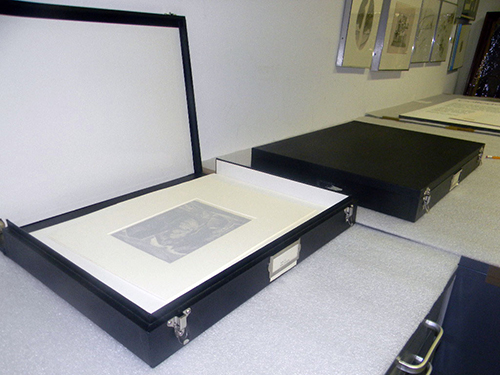
But back to “my” project boxes and their tantalizing contents… Zinnia opened a box, handed me a printed list of images and description of the works we were to verify—about five images per page, each packet consisting of fifteen to thirty pages. The procedure was that she would carefully lift each work, call out its catalogue number, largely in numerical order by year, while I would find the corresponding item on the inventory list and check it off to show that its location had been verified. First, naturally, I was struck speechless (well, maybe not speechless enough; speed and efficiency were also Zinnia’s goals…) by the volume of each box’s contents, realizing that here in my short morning’s work I was seeing only a tiny slice of the Museums’ holdings. Second, I was impressed by the accuracy and thoroughness of the staff’s work, as evidenced by the matching of box contents and image lists. As a member of the Collections Committee, I knew how dedicated and talented the staff is, but here was proof in an area not polished for display.
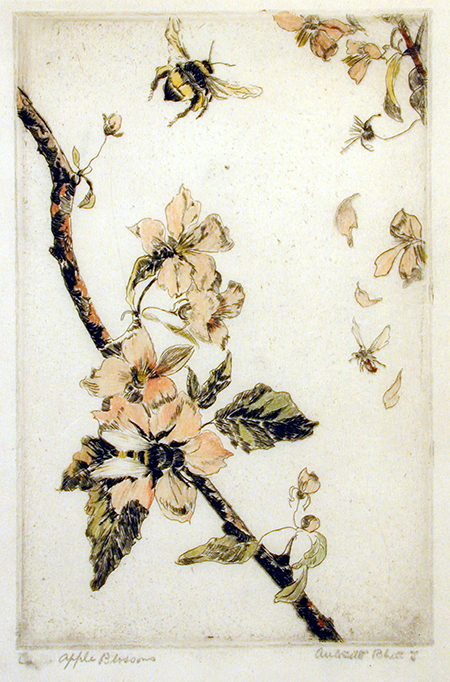
Perhaps most thrilling about my experience with the inventory projects was seeing the variety of subject and technique represented in just these boxes—though I had to remember that I was there to inventory, not examine! Here was Hutty’s student, Antoinette Guerard Rhett (whose husband, I later learned, was of the family for whom our house in Charleston is named!). I could have studied a long time her delicate, small-scale color etchings (Crabapple Blossoms, for example), influenced by Japanese design, I learned, and printed on paper as fragile as their subject. In fact, I could have taken one home to enjoy had Zinnia only stepped out of the room… Alas, she didn’t! Rhett’s titles, too, sometimes delighted; her image of two caterpillars on a leaf is titled The Courtship.
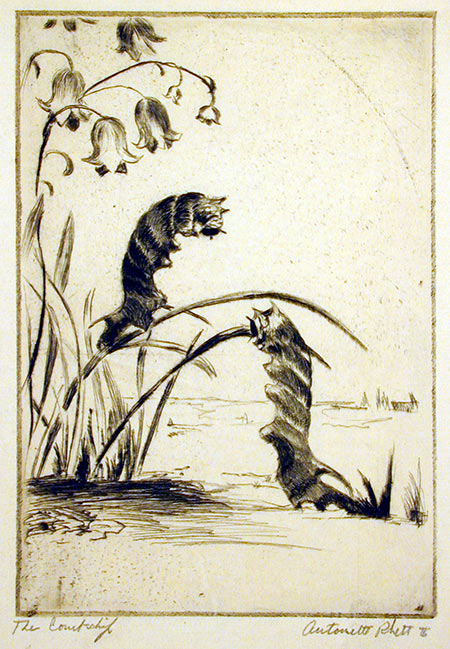
Here also were images by Leila Waring, whom I knew to be a leading figure with Alice Smith in reviving interest in miniatures. After having checked off many images of lovely gates, alleyways, buildings and gravestones, how interesting to see her pencil drawing of a young woman sitting on a rug. This resting figure with fluid dress and bobbed hair looked as though she might at any minute get up and resume dancing “The Charleston.”
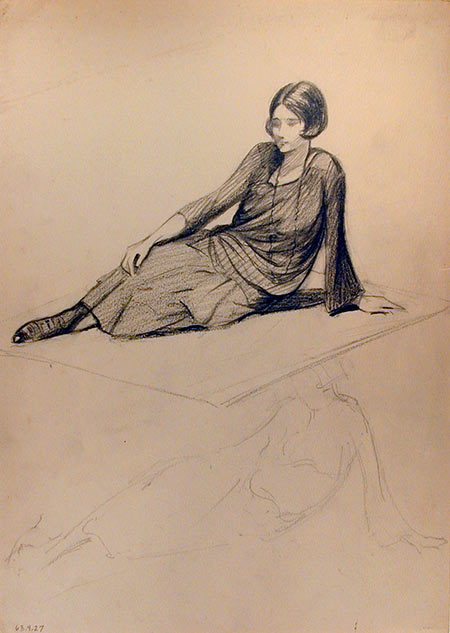
As I was getting accustomed to the delicate lines and colors and fine detail of characterization of many Etchers’ Club artists, I was surprised and intrigued to see the woodblock by Richard Lofton (1908–1966) called Politicians: The Joke. No Spanish moss or soaring steeples or finely-wrought gates here! The face in profile is brutish—huge, sharp teeth—huge, threatening hands—and one figure has a kind of Death’s Head back view. Are they crowding in on a voter? Offering a flask? I could almost feel the ooze and stink. Was “The Joke” on the voters who elected these politicians?
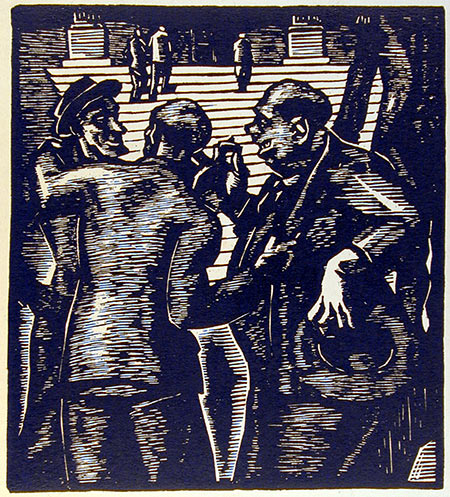
Sometimes, reminiscent of discussions about acquisitions and de-accessions in the Collections Committee meetings, I was left wondering why some of the works were stored and maintained in several iterations although they didn’t seem to have a great deal of congruence with the collecting mission of The Gibbes. For example, the museum owns seven identical images by Harold Tatum of the often-depicted Construction Worker Resting [on a girder, skyscraper in background]. Those are issues which the staff and Director face daily, and this project has given me even more respect for and understanding of the delicate nature of these decisions.
On page nine of her beautiful book The Charleston Renaissance (1998), Martha Severens shares a quote from Charles Henry White, who said in a 1907 Harper’s article inspiring painters to visit and explore Charleston, “…as you press on, you are thrilled with a sense of the endless variety and superabundance of beauty that lures you… fearful that something might escape you…” That is a fair description of how I felt going through those Solander boxes during my inventory morning. Thank you, Zinnia, Harriet, and Katy, for encouraging me to take this opportunity—I pass on your encouragement to others! As Michaelangelo said in his 80s, “Ancora Imparo—I am always learning.”
—Cathy Bennington Jenrette, Collections Committee Member and guest blogger
Published August 28, 2013

